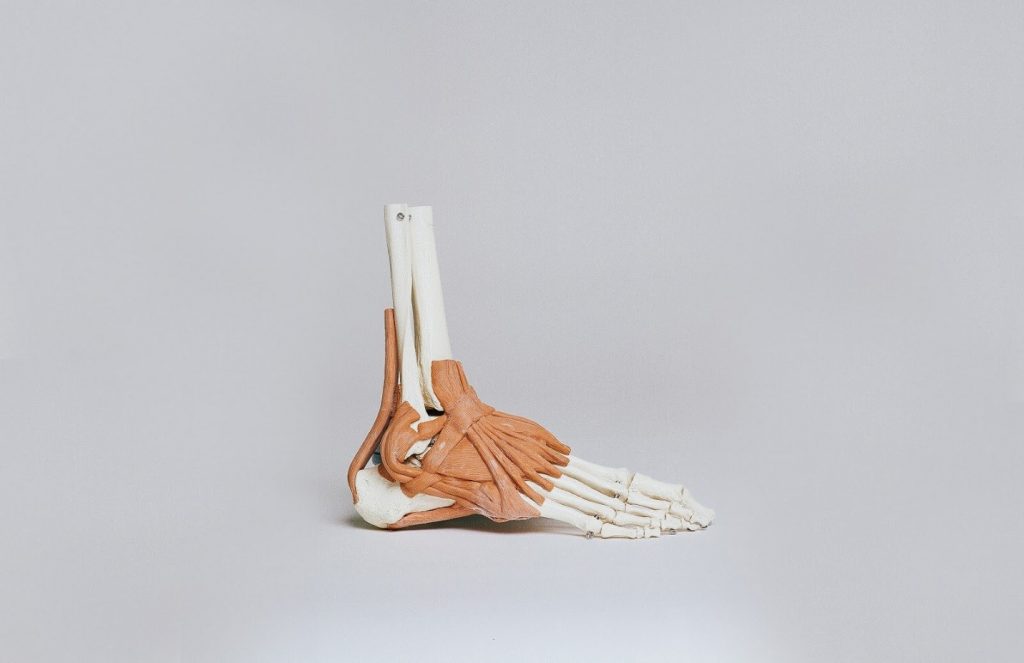HAVING A PROBLEM WITH PLANTAR FASCIITIS?
By Catherine Symons

Plantar Fasciitis simply means a thickening of the plantar fascia, a band of tissue that runs underneath the foot connecting the heel bone to the toes. It is this band that acts as a shock absorbing support for the foot.
This band, as you can imagine, is under quite a lot of stress, and it is this stress that can cause small tears in the fascia itself, as well as inflammation.
The thickening of the band causes pain and discomfort, mainly near the bottom of the foot close to the heel. But it can also run right under the arch of the foot. Pain is most common in the morning when you take your first steps, as well as after exercise or after long periods of being on your feet.
Although the cause of plantar fasciitis isn’t clear, there are many risk factors that could increase your chance of getting it. It is mainly common with people aged 40-60, although at the age of 23 it is an injury that I found I had gained.
Simple things such as the wrong footwear could increase the risk; any sort of movement for a prolonged time that puts your feet in an abnormal way. Particularly with women’s flat shoes, where your toes are having to grip to keep the shoes on your feet and there isn’t sufficient support – something you may not even realise you are doing.
It also may be worth checking what sort of training shoes you are wearing. I myself went to Manor Clinic in Sevenoaks where they got me running on a treadmill to assess my running pattern and how my ‘style’ was affecting my body. I completely changed my running technique to put less stress on to my lower limbs, and essentially my feet.
You can check out my running style in this short YouTube video here:
I couldn’t recommend ‘MOTs’ more. Halo’s in-house Osteopath Andre is excellent at spotting any weak areas which could mean you are compensating in other areas, resulting in injury.
Sports such as running, ballet, and ballistic jumping are at high risk as your lower limbs are under quite a lot of stress here. Foot mechanics play a big part in it too. A high arch or ‘flat’ foot can put stress on the way you walk and stand, with weight distribution being effected; which is a factor that is also common with obesity.
So now you know some of the factors that may have put you at risk of getting the dreaded plantar fasciitis, what can you actually do once you know you’ve got it?
– Ice: This will help reduce the inflammation that has occurred over the first couple of days. A good tip is to use a bottle of ice to gently roll over the bottom of your foot. Using a bottle to roll on at the same time will gently stretch the plantar too, giving it a gentle massage.
– Stretch: Stretching out the fascia and lower legs is something that can be done at home, simply by gently pulling the toes up. Other stretches could be included in the calves too.
– Low impact sport: Such as swimming and cycling will allow you to keep up your fitness but without putting pressure on to the affected area. A simple adjustment such as warming up and down on the bike instead of the treadmill could really help.
– Strengthening exercises: Such as scrunching a towel up or trying to pick a pencil up with your toes can help strengthen this area.
– Taping arch to support: It is quite common for the arch of your foot to collapse, so by using tape it could help keep the arch supported that little bit more – this is something I found actually really helped me and it’s pretty simple to do yourself! You can buy the tape from your local pharmacy store
Of course if pain persists seek further medical advice.
Pic Credit:
Foot pic by Nino Liverani on Unsplash

About the author
Catherine Symons is a qualified level 3 personal trainer, and currently studying to specialise in sports performance enhancement. Having competed from a young age in middle distance running, including representing Kent in many cross country championships, she understands what hard work is.
For the past two years she has begun to move away from competing in distance running, and instead found a passion in strength training. Combining the two disciplines together, Catherine has a good knowledge of many aspects of sports training.
Catherine’s passion is to help athletes and the ‘everyday gym goer’ to perform to their absolute best, in the most efficient way possible, to reach their goals and to achieve great results.

